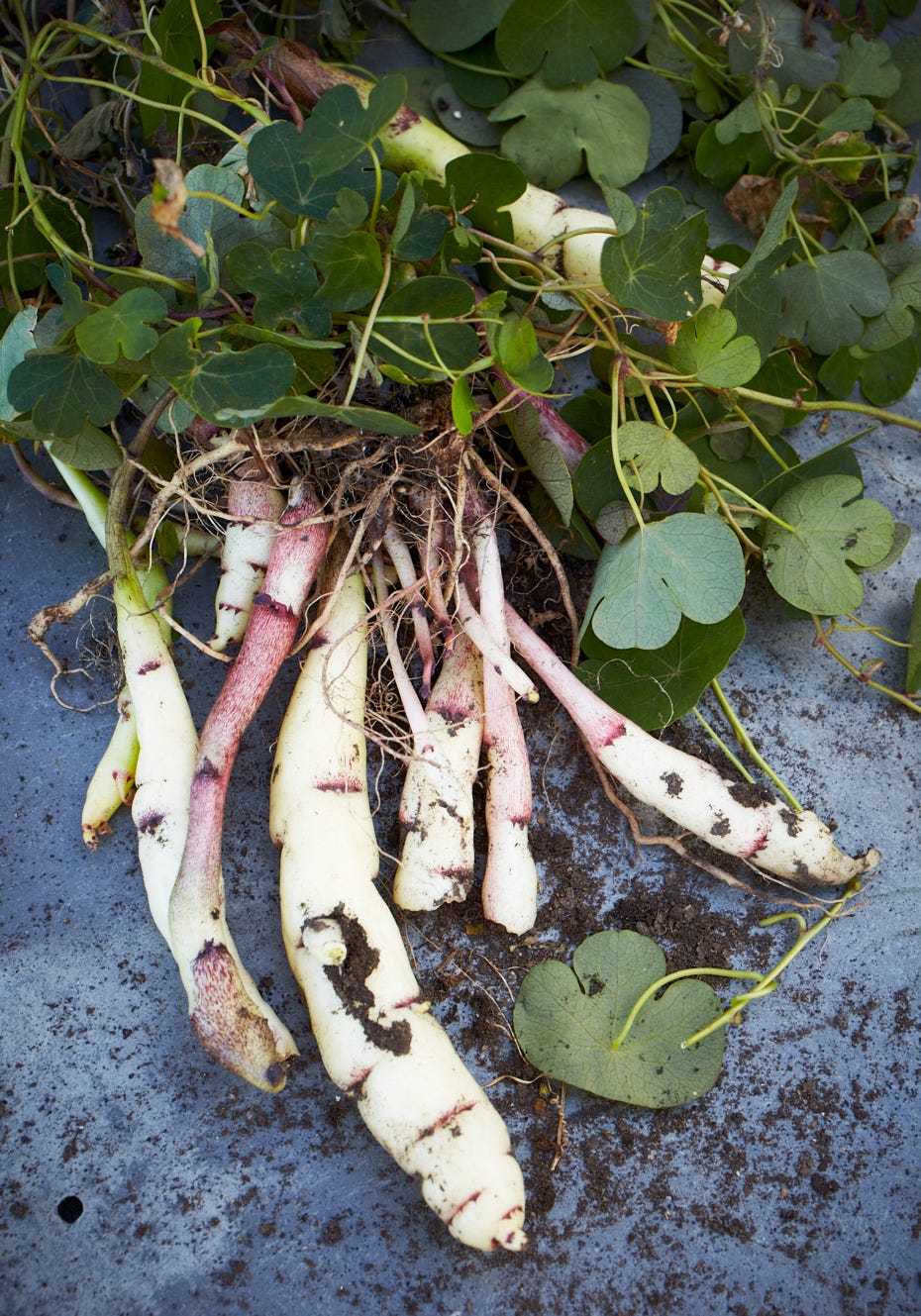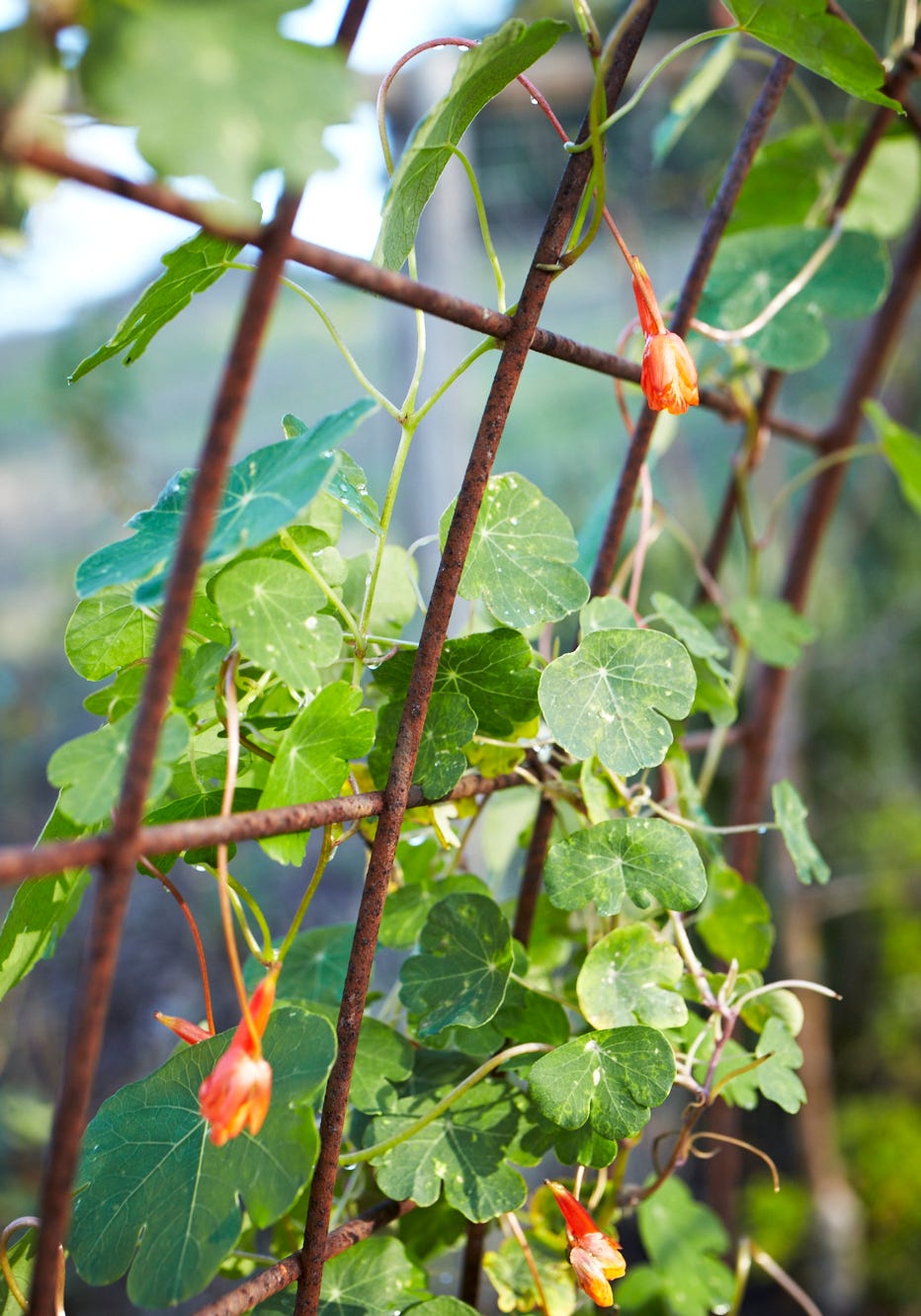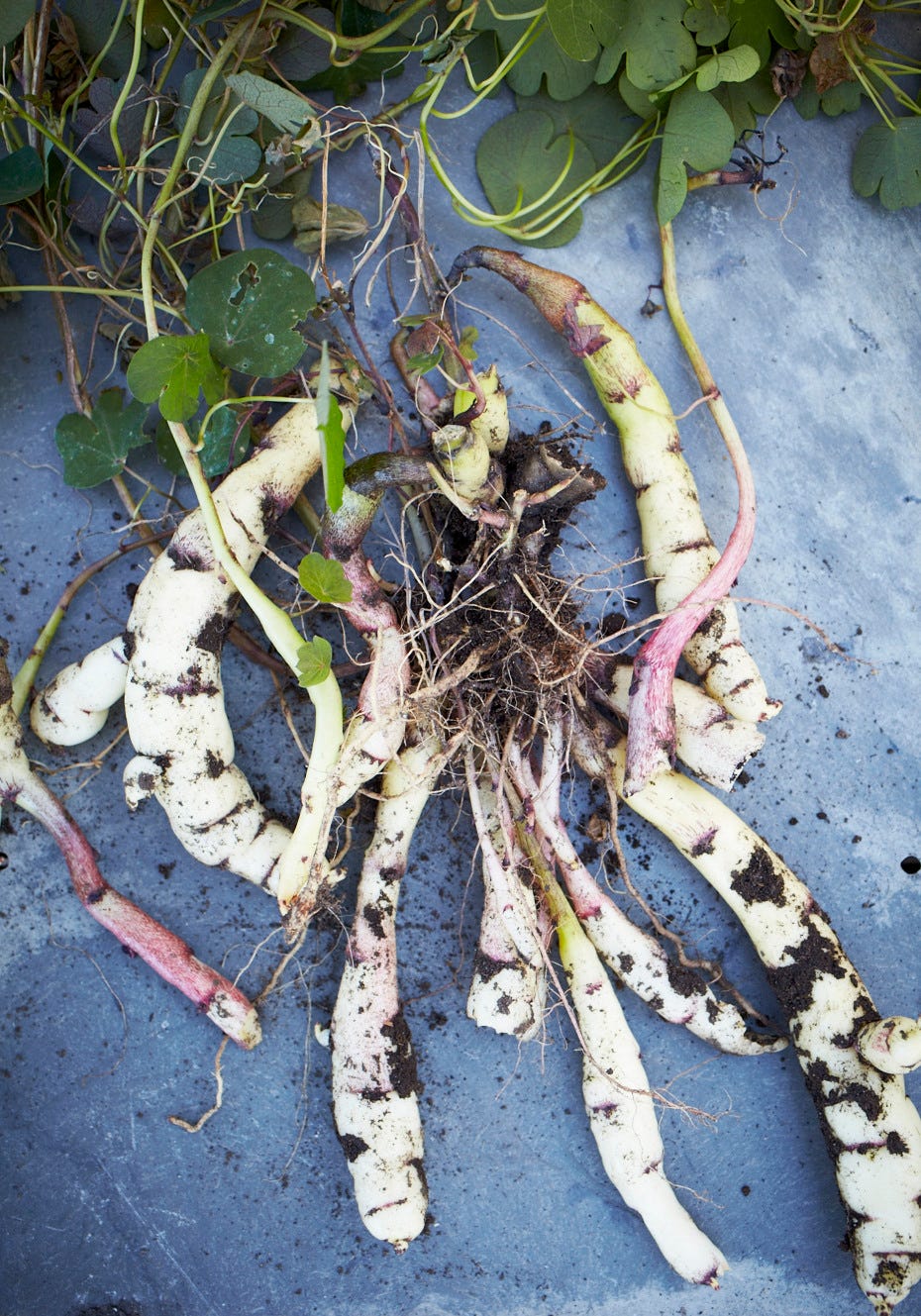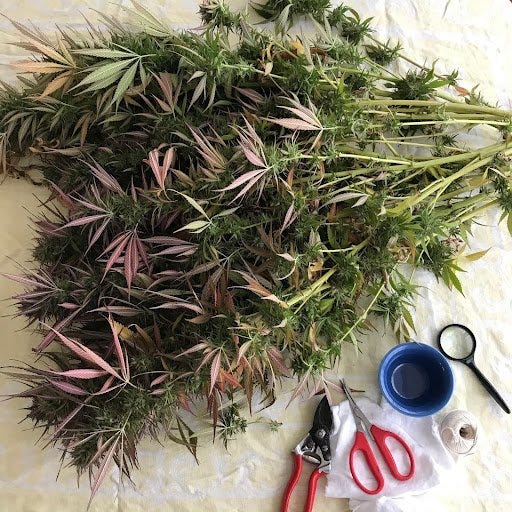MASHUA, aka Tropaeolum tuberosum
The totally tubular & lesser known cousin to the ubiquitous nasturtium
One of the great joys of growing your own food is that it creates the opportunity to try unique, lesser-known fruits and vegetables that you would never find at the local grocery store.
Mashua is a perfect example. Its ubiquitous cousin, the easy-to-grow nasturtium, is one of the most well-known edible flowers out there, and, as with nasturtium, you can eat mashua leaves, flowers, and seeds. Mashua’s main crop, however, is its tubers. If you’re looking for a delicious alternative to potatoes, mashua is the answer. Its tubers are long and come in a variety of colors, and they can be roasted, baked, fried, and cooked in soups and stews.

IN THE GARDEN
Mashua is one of the easiest salad plants you can grow. A hardy perennial in USDA zones 7 to 10, it can be grown in all zones if you dig up the tubers and bring them indoors during the winter months, similar to how you’d overwinter a dahlia. Mashua is absolutely worth planting no matter what your growing zone.
This climber grows 7 to 13 feet (2 to 4 m), producing masses of lush, rounded, blue-green foliage and trumpet-shaped, orange- red flowers. Bloom time is midsummer throughout fall until frost. Plant tubers once the threat of frost has passed, usually in March. Start seed indoors about 3 months before you move them outside. In mild climates, mashua prefers full sun. In warmer climates, it will grow best with some afternoon shade. Mashua can grow in almost any type of garden soil as long as it’s kept moist. In our Mediterranean climate, we plant it in our kitchen gardens instead of the lower-water landscape. For those of you with summer rain, try adding it to a space where it can climb with support.
HARVEST
Mashua tubers form near the surface and are typically harvested when the plant’s leaves and flowers die back after a winter frost. When harvesting the tubers and roots, make sure that you don’t spear the crop with your garden fork or shovel. Gently harvest the tubers using a hand trowel and your hands. Tubers can reach up to 13 inches (33 cm) in length. Where mashua can overwinter outside, harvest some for eating and allow others to remain in the ground to grow again the following year. In cooler zones, store a portion of the harvest to plant in the garden the following spring.
All parts of the mashua plant can be eaten raw or cooked. The leaves and tubers have a mild, peppery taste, reminiscent of radish. Larger leaves can be used to wrap other ingredients, similar to grape leaves but with a spicy kick. The blooms are a go-to late edible flower in all of our salads, which we can use much longer than less cold-hardy greens. Mashua tubers are high in vitamin C and relatively high in protein for a root crop. Although you can eat them raw, we prefer to cook them or use them to make pickles.
Mashua grows underground like a potato, but the aboveground vine looks like a nasturtium. Its tubers taste a bit like anise and are packed full of nutrients. Developed in the Andean mountains in South America, this root vegetable is best served mashed with butter and seasoned with sea salt and pepper. If you have parsnips on hand, add a few to the mashua mash!
2025 Classes and Events
We welcomed 2025 last week with a ton of jet lag and appreciation for the opportunity to travel. The weather was cold and rainy, but it did not hamper us from eating our way through Paris & Puglia. Once I am fully recovered, I’ll share a few of our favorite spots. And speaking of travel … I am headed to Seattle in February to speak at the Northwest Flower & Garden Show. If you are attending this year’s show, please stop by and say hello! My talks on Fragrant Gardens and Growing Tea take place on the 19th & 20th and when not on the speaker’s stage, I’ll be taking in all of the gardens and most importantly seed shopping! Back home in the Bay Area, I will be teaching throughout the year - see below for a few of my classes.
Hope your 2025 is off to a good start!
-Stefani
Homegrown Harvest: A Guide to Growing Your Own Food
March 29 Grow Your Own Salad -Lafayette, Ca Ever dream of savoring a fresh, crisp salad made from your own garden? Join us for our "Grow Your Own Salad" hands-on workshop where you will learn the process of growing and harvesting salad greens.
April 17 & April 26 Tomatoes, Tomatoes, Tomatoes - Lafayette, Ca Whether you're a seasoned gardener or just starting out, this course offers invaluable insights into selecting the perfect tomato varieties, preparing your soil, and implementing effective planting techniques.
August 7 & September 6 The Fall/Winter Garden - Lafayette, Ca Learn how to plant garlic, cover crops and cool season vegetables to enjoy in the fall and spring edible garden.
Herbal Magic: Cannabis & Herbal Gardening
April 10 Herbal Magic: Cultivating Culinary & Medicinal Plants - Lafayette, Ca. Join Stefani Bittner and fellow Ten Speed Press author, Penny Barthel in a four class series on growing culinary and medicinal herbs, including cannabis, in the garden. These two master plantswomen and expert gardeners will take you through every season in the herb garden, from seed planting to salve making and every step in between.
May 22 Summer Herbs & Cannabis: Companion Planting and Care - Lafayette, Ca Dive into the world of synergistic gardening with our specialized class, "Summer Herbs & Cannabis: Companion Planting and Care." This class is designed for gardeners looking to optimize their green spaces through the art of companion planting, focusing on the harmonious cultivation of annual and perennial herbs, including cannabis. You’ll be equipped with the skills to create a thriving garden that leverages the natural benefits of plant relationships.
September 18 Harvesting Excellence: Final Care for Herbs and Cannabis -Lafayette, Ca This hands-on course is designed for gardeners who want to master the final stages of the growing cycle, ensuring that their herbs and cannabis are harvested and processed with precision and care.
November 13 Kitchen Alchemy with Herbs and Cannabis - Lafayette, Ca. Join Penny and Stefani in the kitchen as we use the bounty of the garden in bespoke creations in the kitchen. This is what the summer herb garden was heading for all season! We become kitchen alchemists as we transform our harvested herbs into tisane, tincture, infused oil, salve, and delicious beverages and edibles. Penny will offer instruction on the unique properties of cannabis for health and wellness as we include it in the herbal ingredients in our creations. Come prepared to learn by doing as we make several favorite herbal recipes for mind, body and soul.








Love this edible - I plant a tuber at the bottom of my Szechuan pepper and it entwines itself over summer with lovely flowers